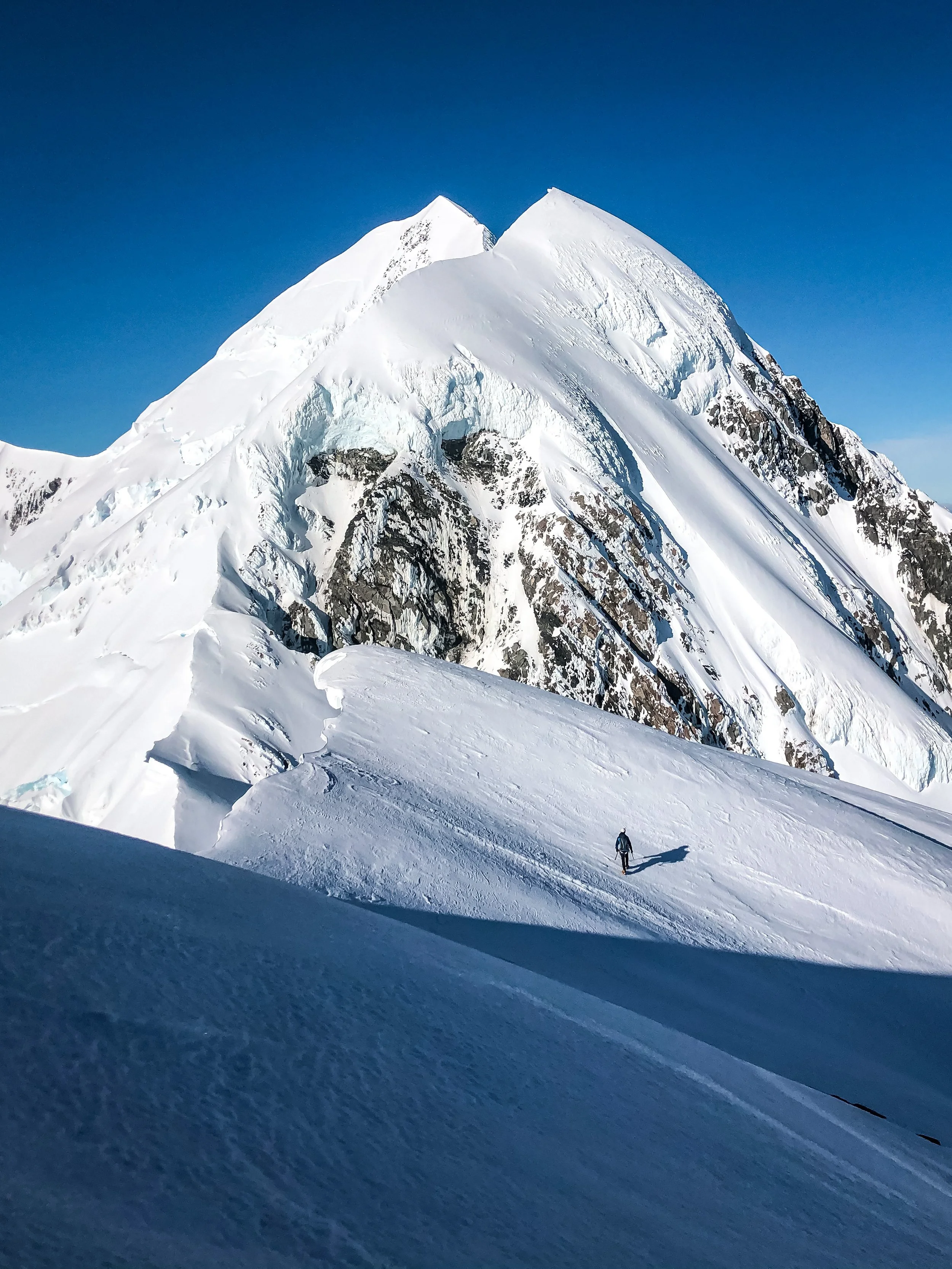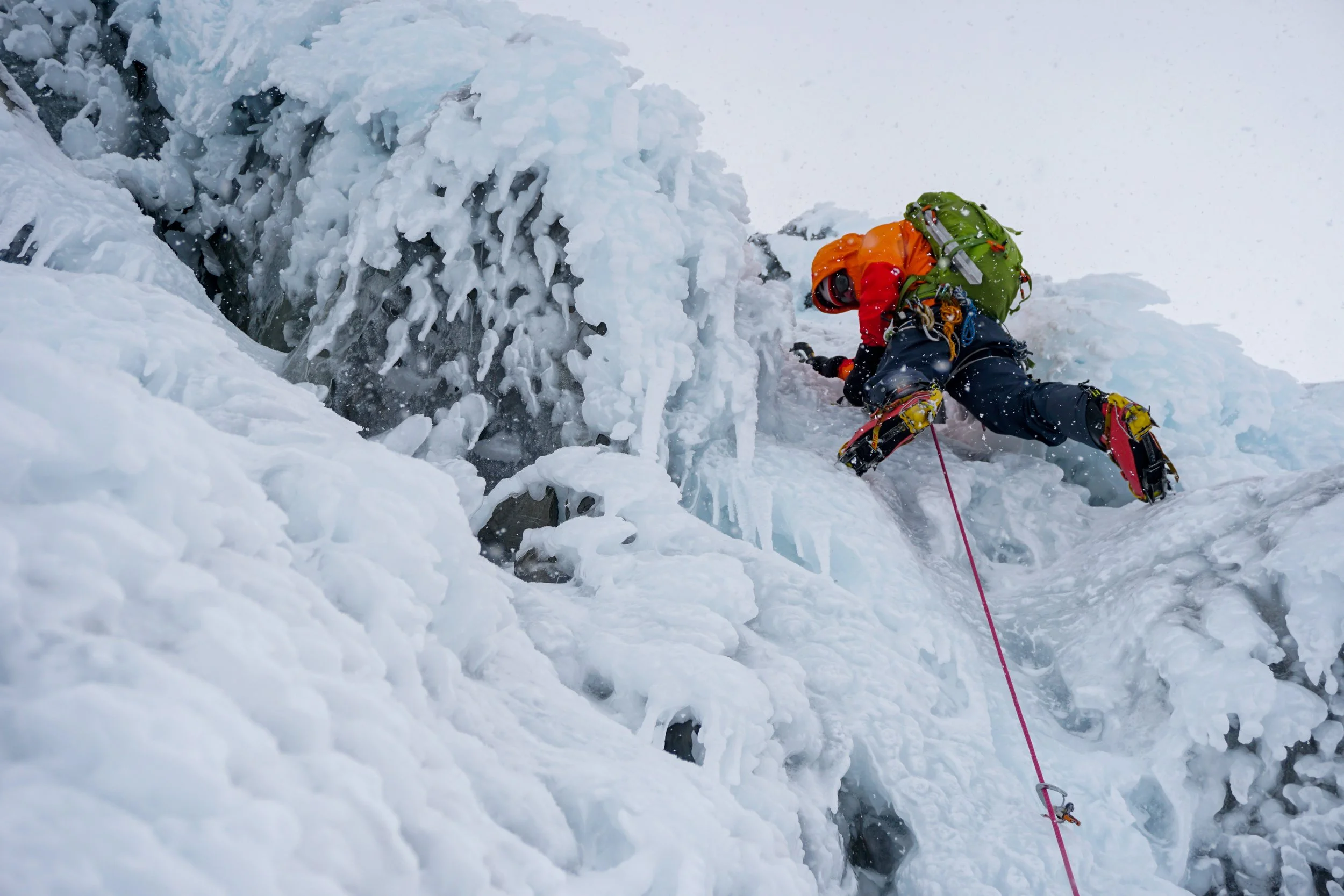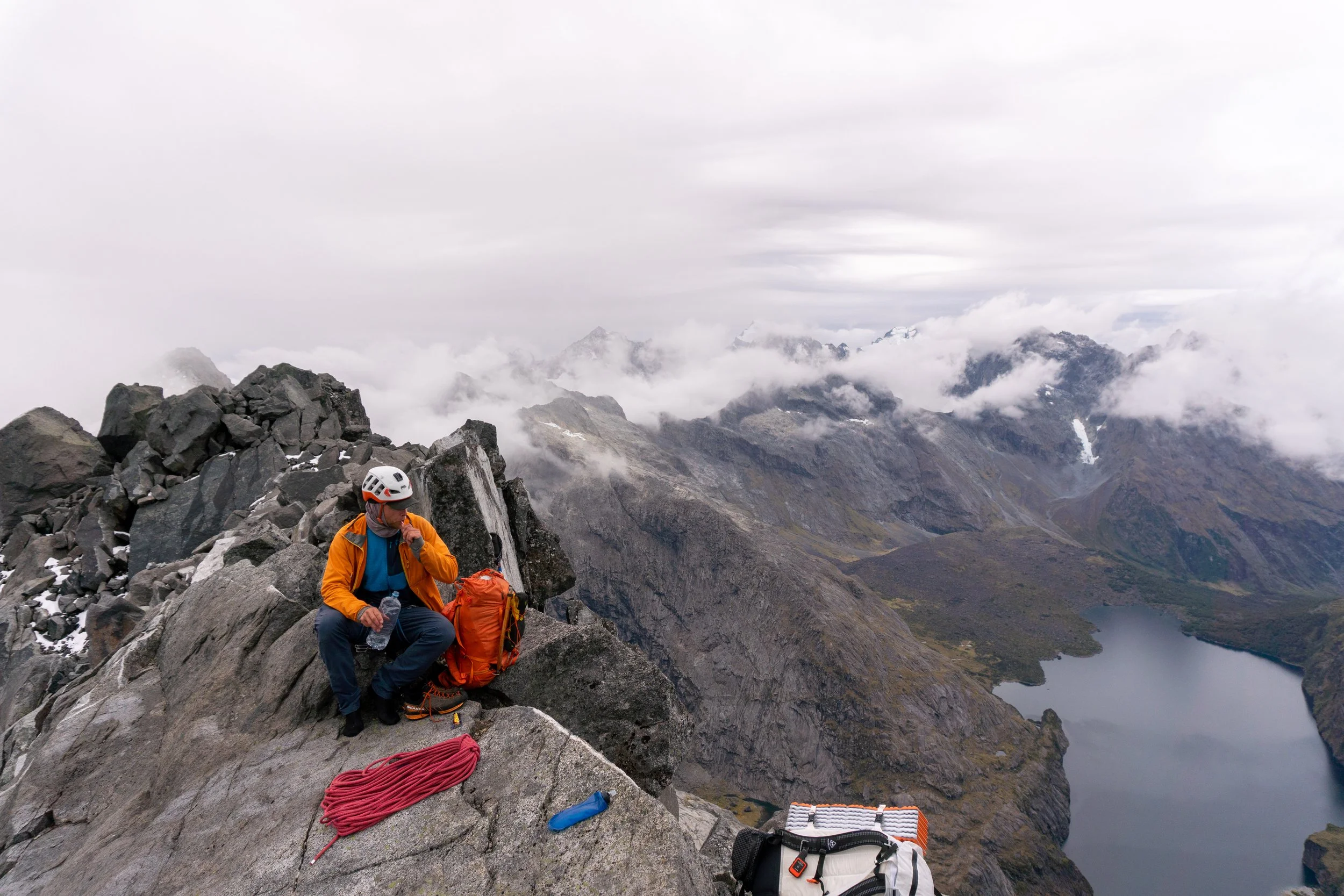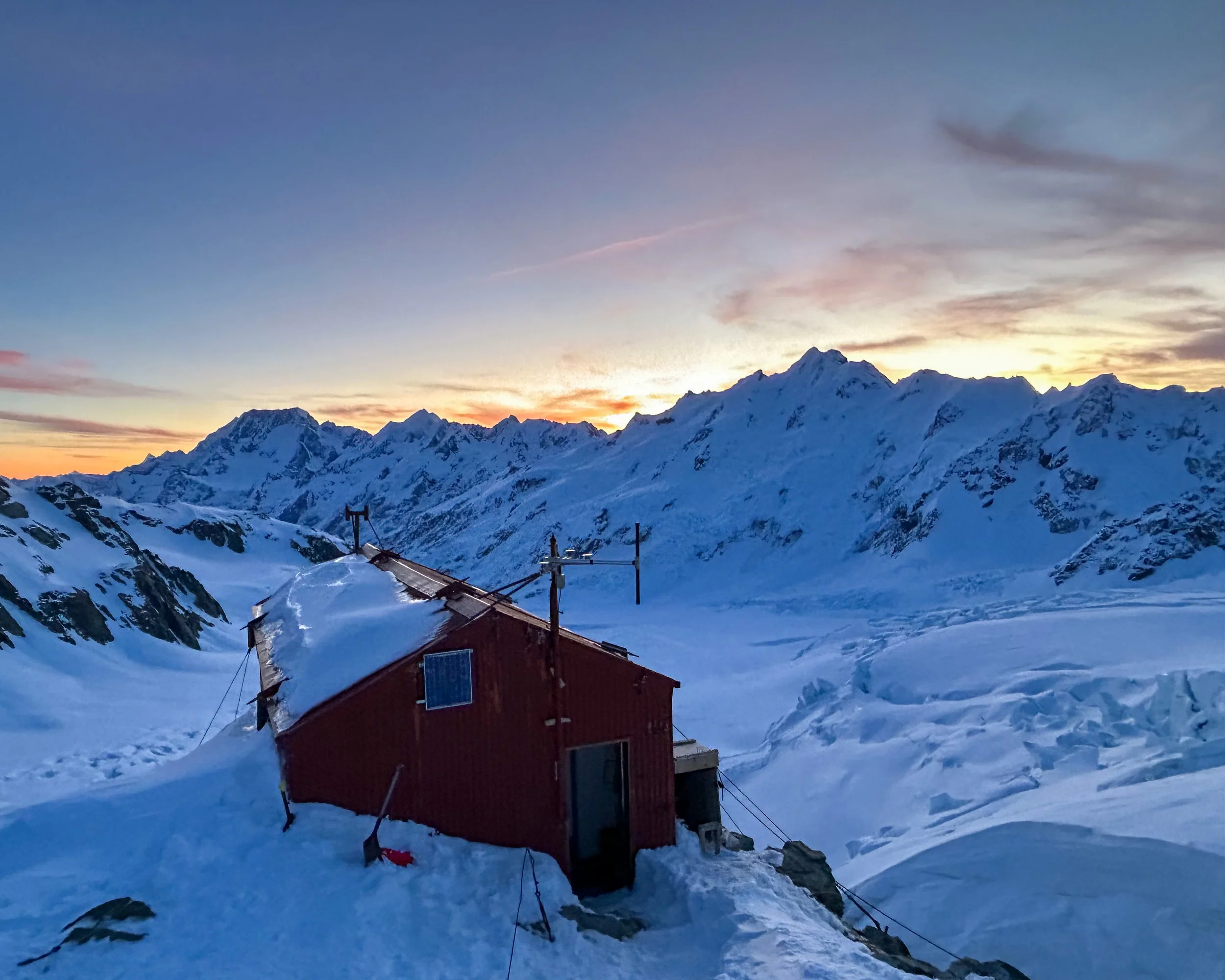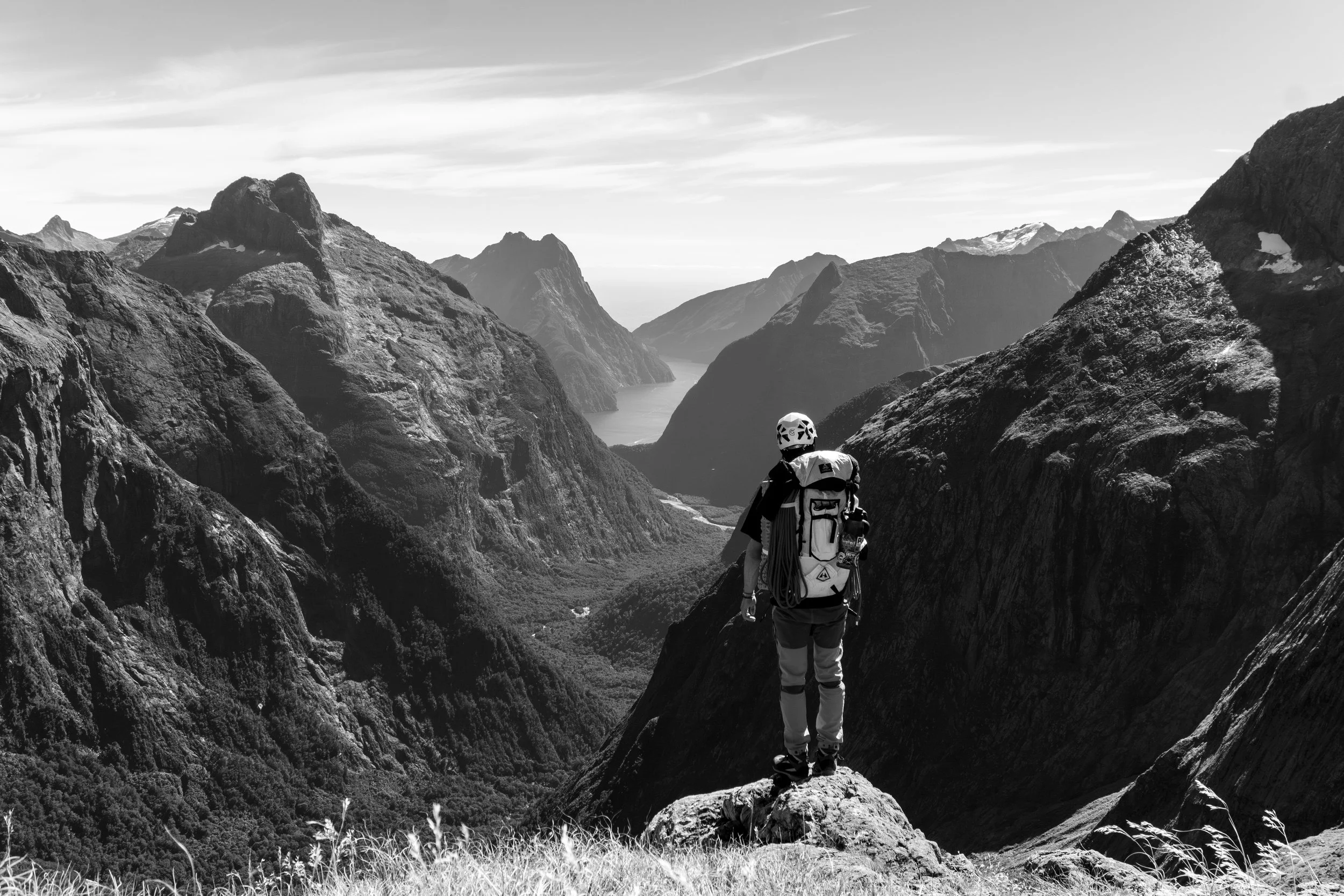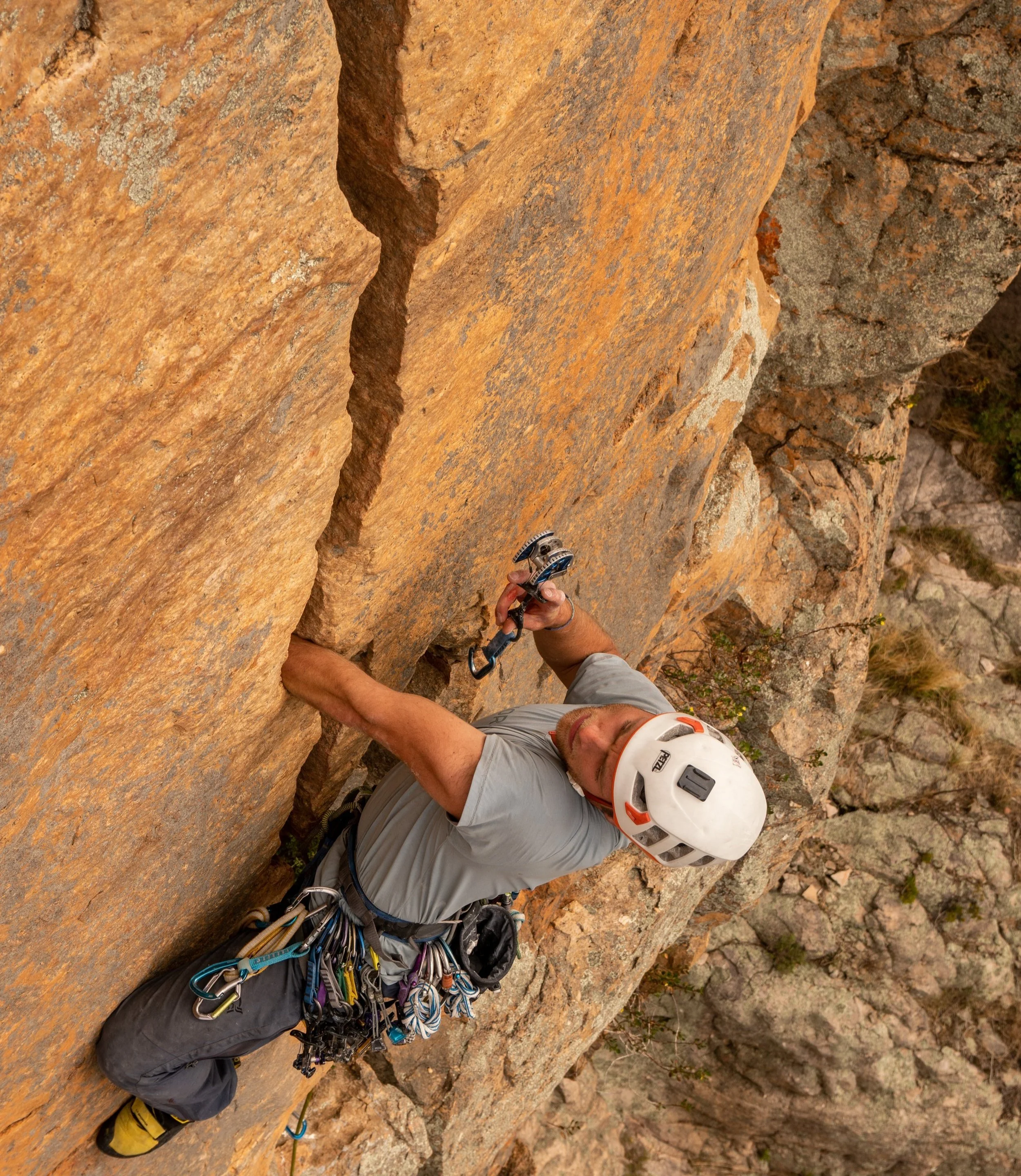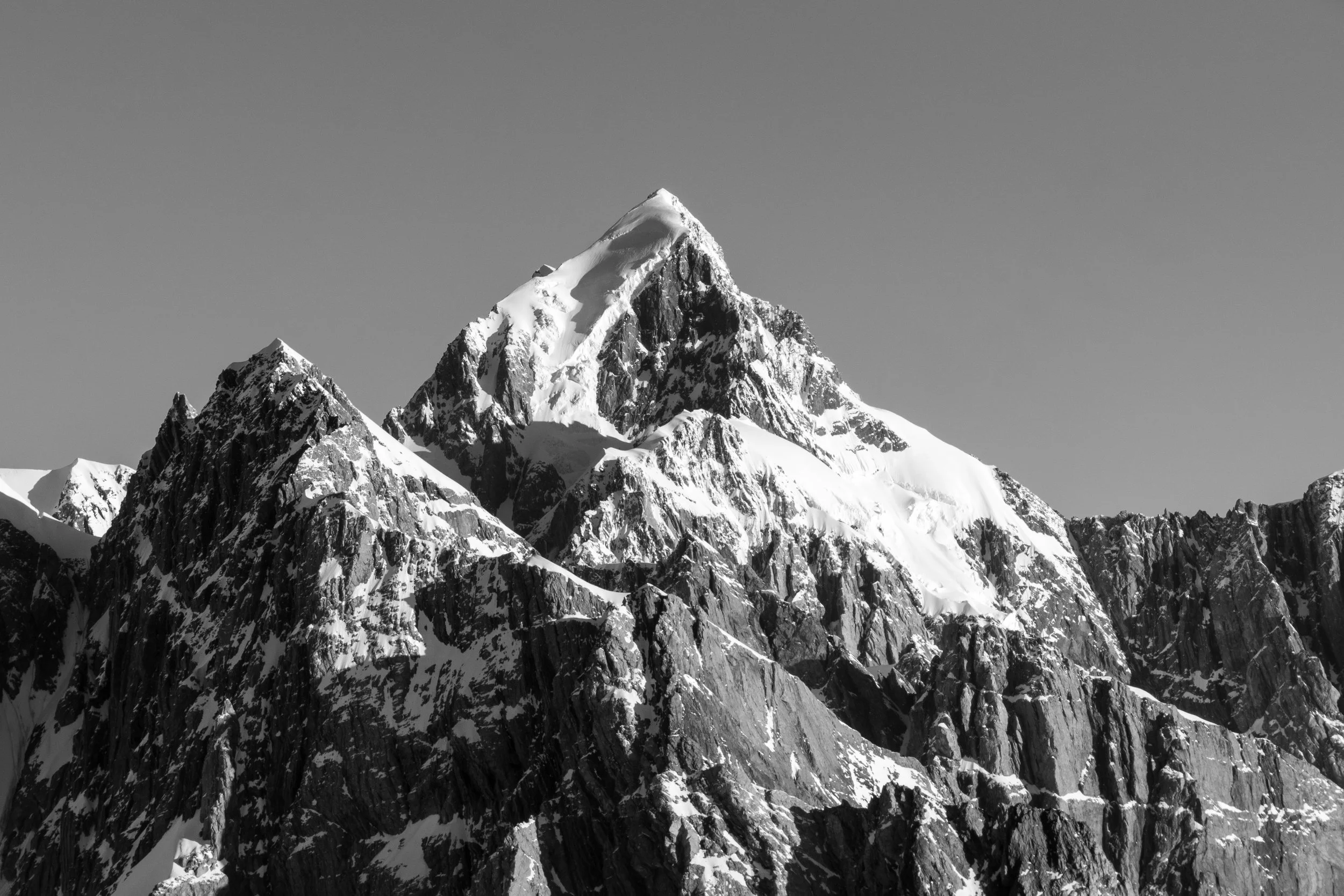Mountaineering Down Under - The Southern Alps of New Zealand
From the high glaciated peaks of Mt Cook to the steep granite faces of Fjordland, New Zealand is a destination for climbers seeking adventure and variety. There is something for everyone, whether you're into fun ridgeline scrambles or technical alpine faces.
Mt Tasman
Te Ka Tiritiri o te Moana, or The Southern Alps is a 500km long chain of mountains that divide the entire south island. These are some of the fastest-changing mountains on the planet due to tectonic plate movement and erosion.
The western side of the divide rises steeply out of the Tasman Sea and forms a lonely barrier to the moisture-laden storms that rip around the Southern Ocean.
As clouds are forced to rise over the Alps they release meters of rain per year, which feeds dense rainforests and turbulent rivers before freezing and contributing to low-lying glaciers and high snowfields. Due to the extreme nature of these valleys, there is very little infrastructure on this side aside from small huts, and the access is often more difficult than the climbing.
The eastern side is a totally different environment. In the rain shadow of the mountains, the peaks gradually give away to windswept plains and large rolling valleys carved out by ancient glaciers. This is where most of the island's ski fields are.
Schist and greywacke form the backbone of the main divide. Both of these rock types are brittle and often require care to climb. Don't worry, some areas are more solid than others! You can find whole ranges of granite, and overhanging limestone cliffs too.
Climbing rime on the main divide - photo Dave Eckl
The thing that makes New Zealand unique is that you have a true wilderness experience every time you head into the mountains. So much so, that the climb often is just a small piece of the overall trip.
The access is rugged, and the remoteness can be unnerving but you will be rewarded with untouched wilderness as far as the eye can see, and often entire mountain ranges to yourself. It's a far cry from the busy huts and lifts of Chamonix.
I'm going to share a few of my favorite areas and sought-after climbs below.
Barrier Peak, above lake Adelaide - photo Dave Eckl
The Tasman Saddle hut and Upper Tasman Glacier
Tasman Glacier, Mt Cook National Park
Home to the country's largest mountain and glacier. The upper Tasman Glacier and the Grand Plateau are top mountaineering locations. Aoraki Mt Cook itself hosts a smorgasbord of epic routes to its summit and the surrounding peaks are stacked with ridges and faces to climb.
Routes:
Mt Cook Grand Traverse, Walter East Face, Malte Brun West Ridge
Fatmap: https://fatmap.com/routeid/1227502/aoraki-mt-cook-grand-traverse?fmid=cp
The Remarkables, Southern Lakes Region
With an access road that takes you close to the base of the mountain and a ski field in winter, the Remarkables is the closest thing you’ll find to a European range. In winter, the faces freeze up and turn into a mixed climbers playground. It’s home to the annual Ice and Mixed festival and the routes range from single pitch to 350m long.
The Southern Lakes region, in general, has heaps of good climbing, easy access, and fair weather which makes it a good base. It would be a perfect first stop for a trip to New Zealand.
Routes:
Remarkables Grand Traverse, Fridays Fool, DB Eh
Fatmap: https://fatmap.com/routeid/1080431/grand-traverse-of-the-remarkables?fmid=cp
Summiting Single Cone - photo Howie McFayden
Gertrude Saddle looking towards Milford sound
The Darrans, Fiordland National Park.
Located in New Zealand’s largest national park, the Darran Mountains have the best and wildest rock climbing in the country. The rock type is mostly granite and the faces are huge. As most of the range is far from the road these peaks earn a lot of respect due to remoteness and the seriousness of approaches and descents. It also has two perma-dry crags which are world class. Homer's hut is the base.
Routes:
Sabre North Buttress, Lucky Strike, Talbot McPherson Traverse
Fatmap: https://fatmap.com/routeid/1072732/mcpherson-talbot-traverse?fmid=cp
The Fox Neve, Westland National Park
My personal favorite. The Fox Neve is made of serval different glaciers and is cirqued by many of New Zealand's highest peaks. It offers a huge range of climbing options from alpine rock in summer to classic alpine ice routes in winter and is the most common way to tackle Mt Tasman - New Zealand's second-highest peak. Pioneer hut is the usual base for anything in this area and sleeps 12 comfortably.
Routes: Moonshine Buttress (Conway), Tasman North Shoulder, Douglas South Face
Fatmap: https://fatmap.com/routeid/1092957/north-shoulder-of-mt-tasman?fmid=cp
Tasman North Shoulder
Arapiles, Victoria Australia
Although it’s in Australia, Arapiles is often called the best rock climbing here due to it being a short flight away. I would argue this is one of the best trad climbing destinations in the world. There are thousands of routes ranging from exposed scrambles to extreme full trad lines with a high concentration of moderate routes. Even the easy climbs are often ridiculously exposed and you learn to trust your gear pretty quick.
If you’re a keen trad climber you need to plan a trip to Aussie at some point. I’ve never enjoyed rock climbing so much in my life.
Routes: Watchtower Crack, Tannin, Tiptoe Ridge
Scorpion crack (18) - photo Justin Wimmer
What are you waiting for?
Aoraki Mt Cook from a different angle.
Fox Glacier and Chancelor hut

